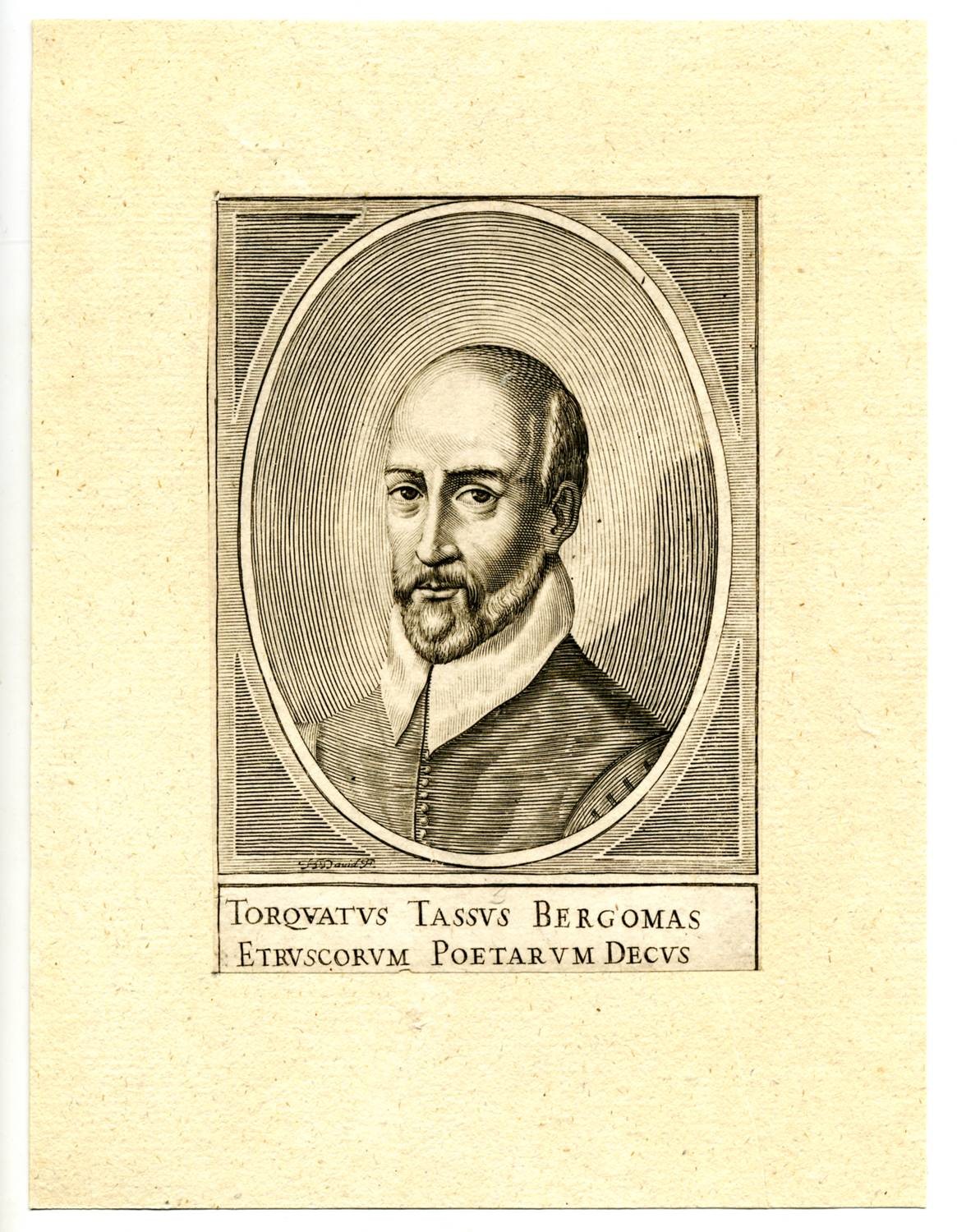Der Kupferstich zeigt den Dichter Torquato Tasso (1544-1595). Sein Hauptwerk "La Gerusalemme liberata" ("Das befreite Jerusalem") beschreibt die Belagerung und Einnahme Jerusalems durch die christlichen Kreuzritter unter Gottfried von Bouillon im Jahr 1099. Das Epos diente als Vorlage für das Libretto der Oper "Rinaldo" von Georg Friedrich Händel.
Das Porträt zeigt Tassos Gesicht nach links gerichet im Viertelprofil, mit Bart und Glatze. Er trägt ein Wams mit Knöpfen und hohem hellen Kragen.
Künstlersignatur: H. David F.
Aufschrift: TORQVATUS TASSVS BERGOMAS | ETRVSCORVM POETARVM DECVS
Quelle: Tomasini, Giacomo Filippo: Illustrium virorum elogia iconibus exornata. Padua: Apud Donatum Pasquardum & socium, 1630. S 169.
en

